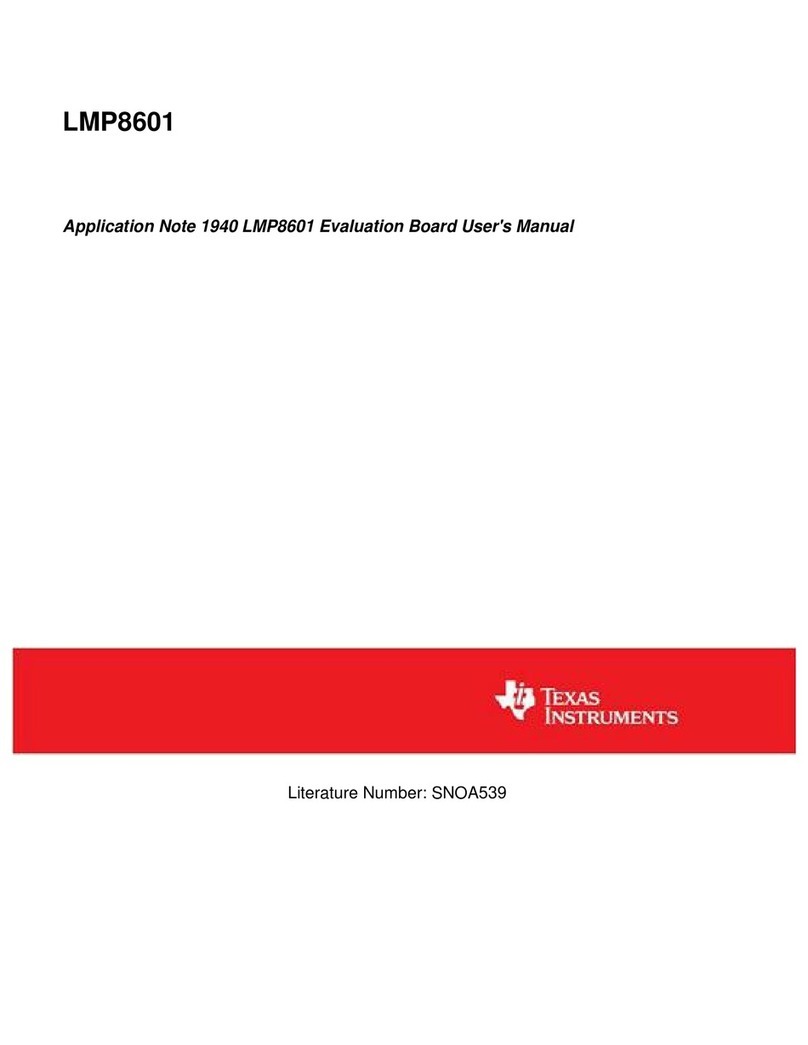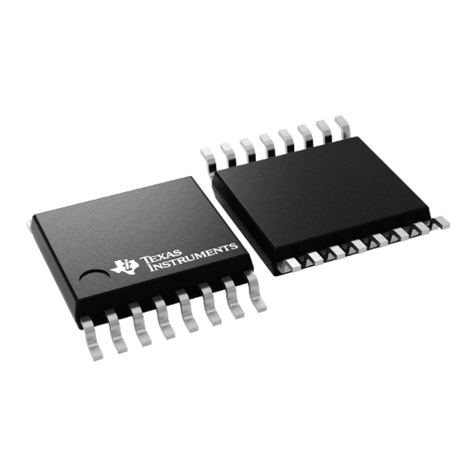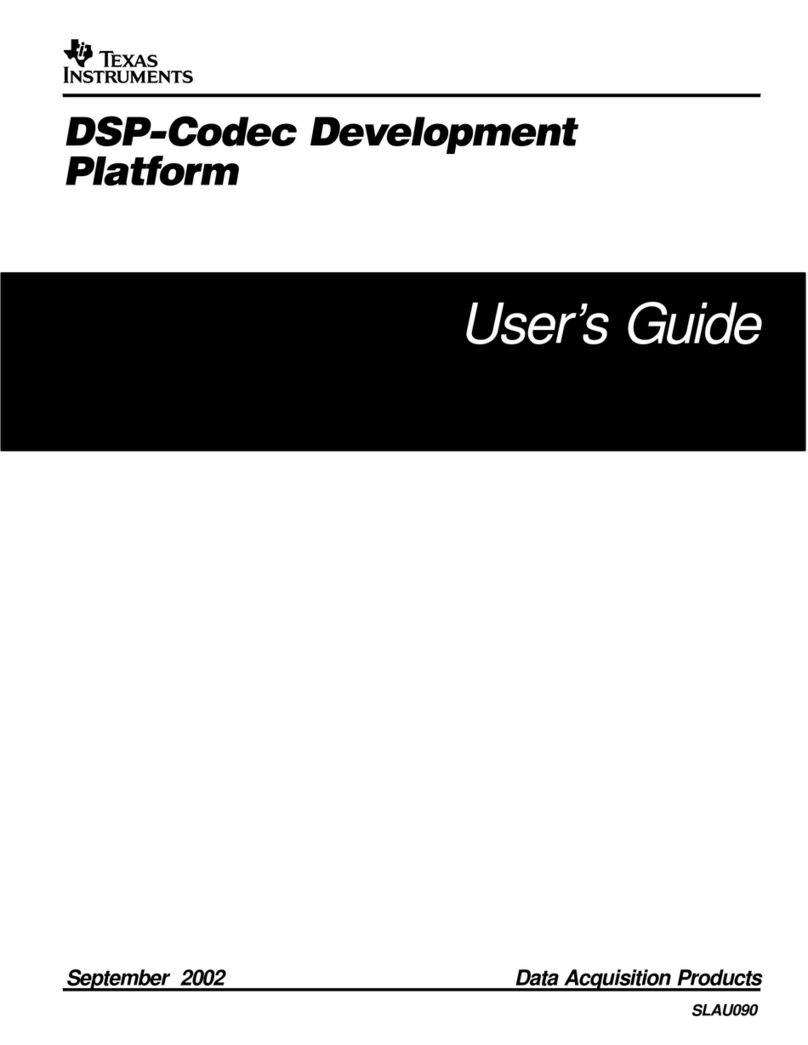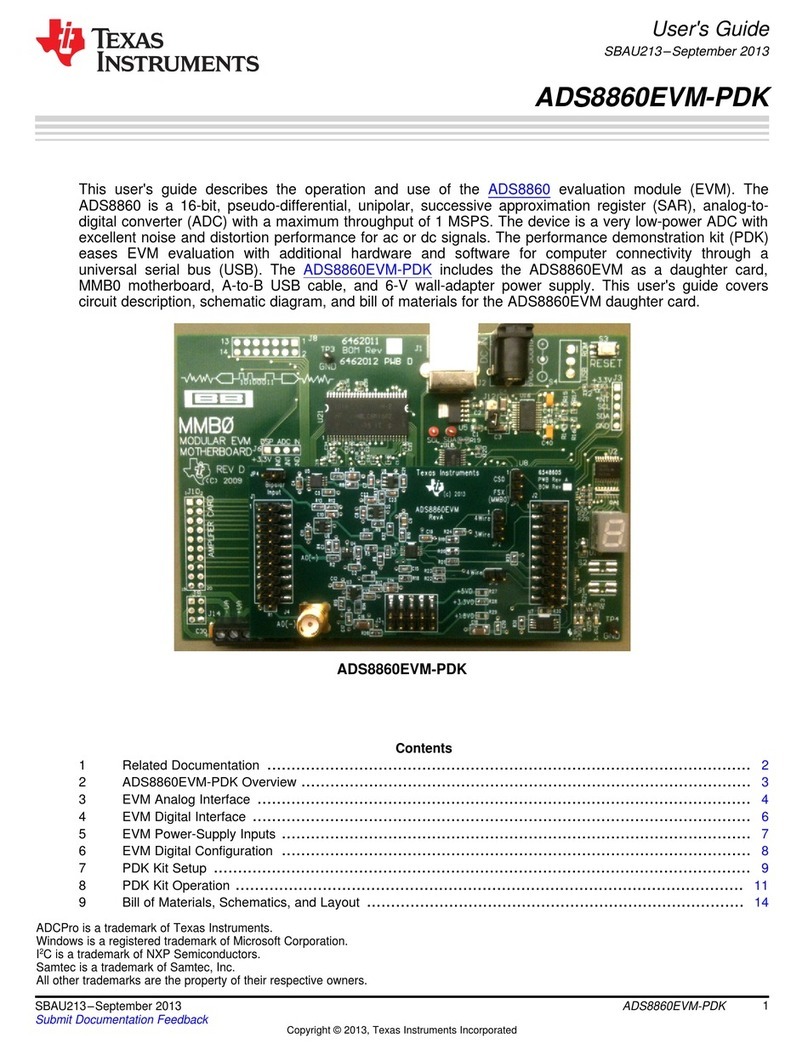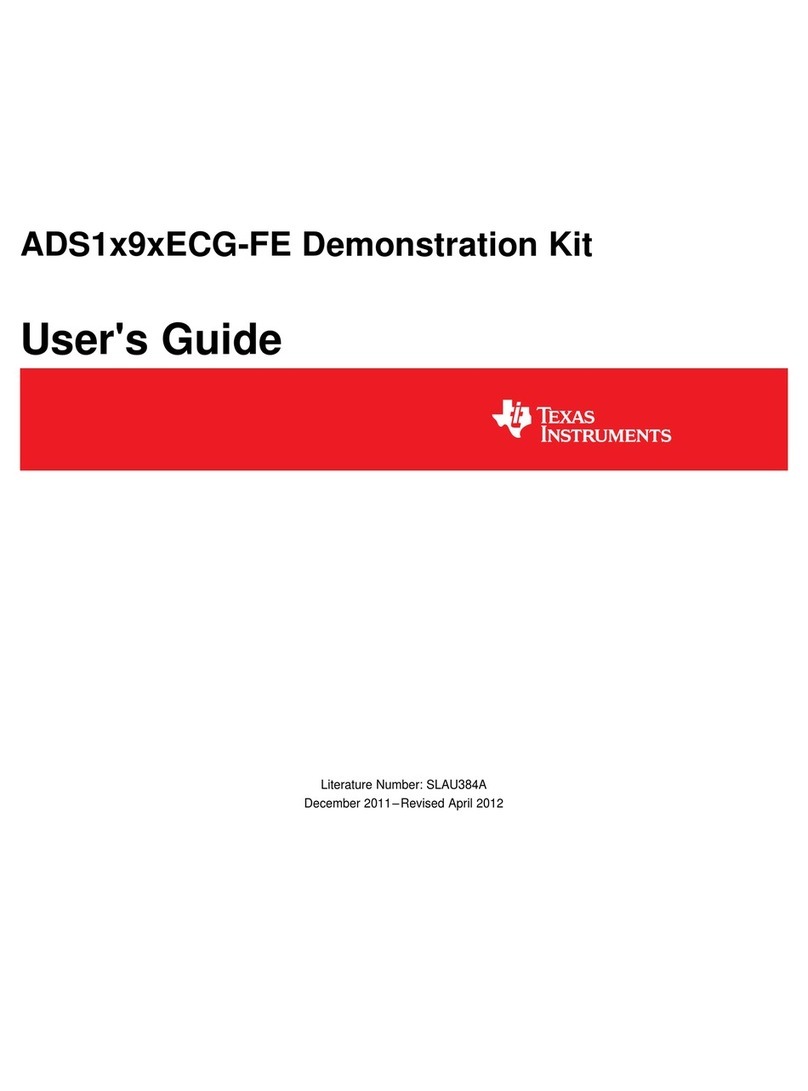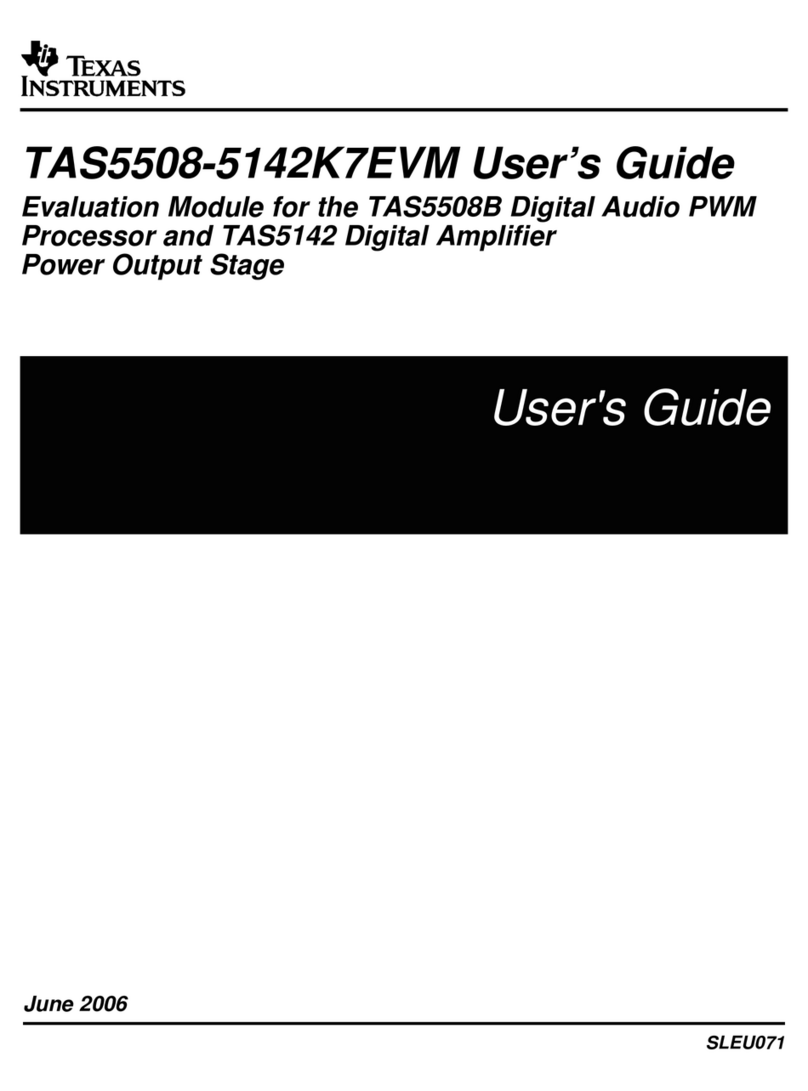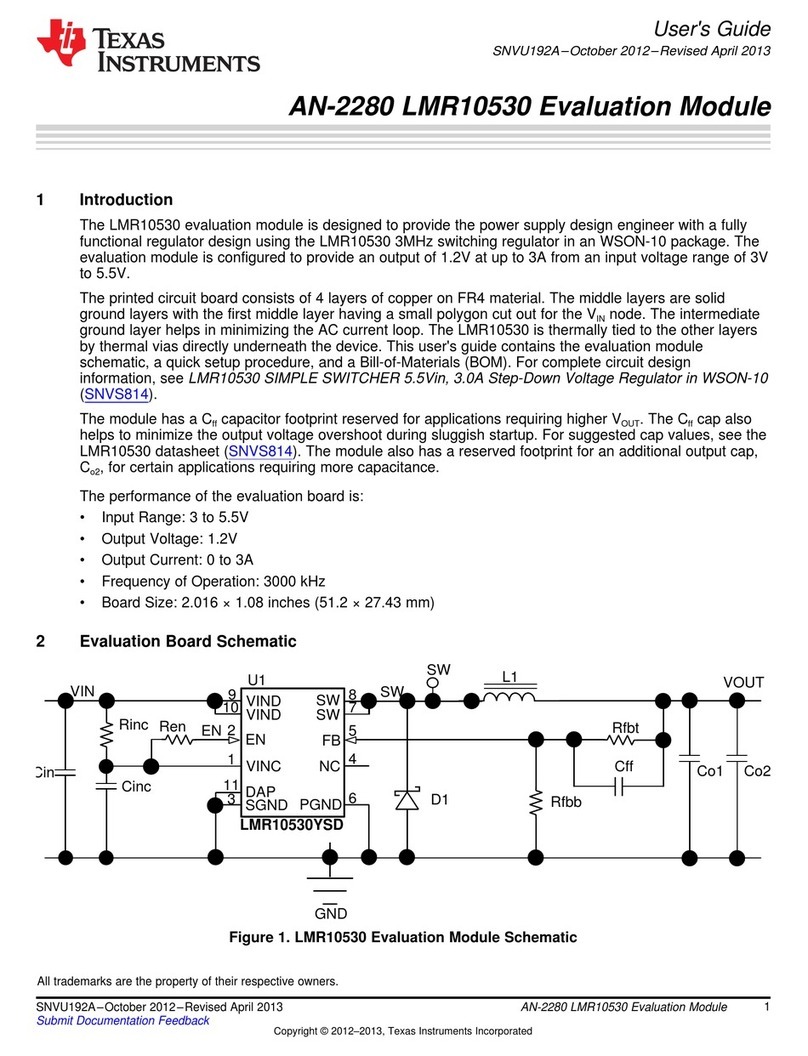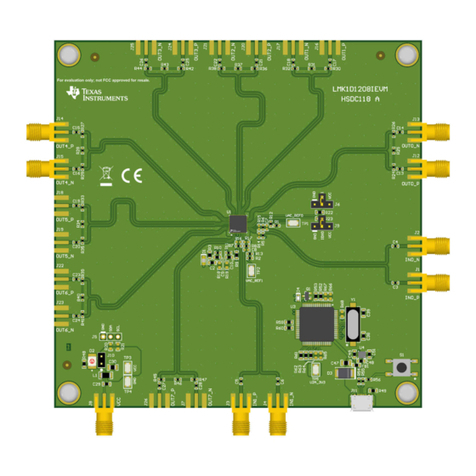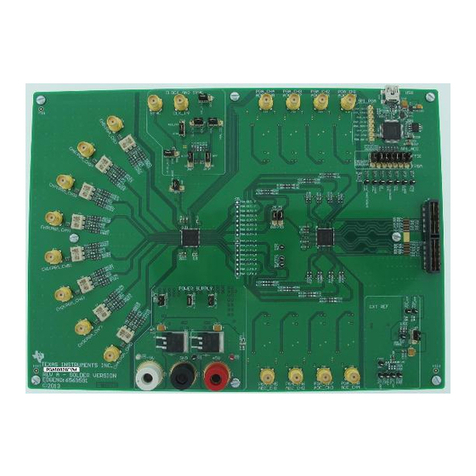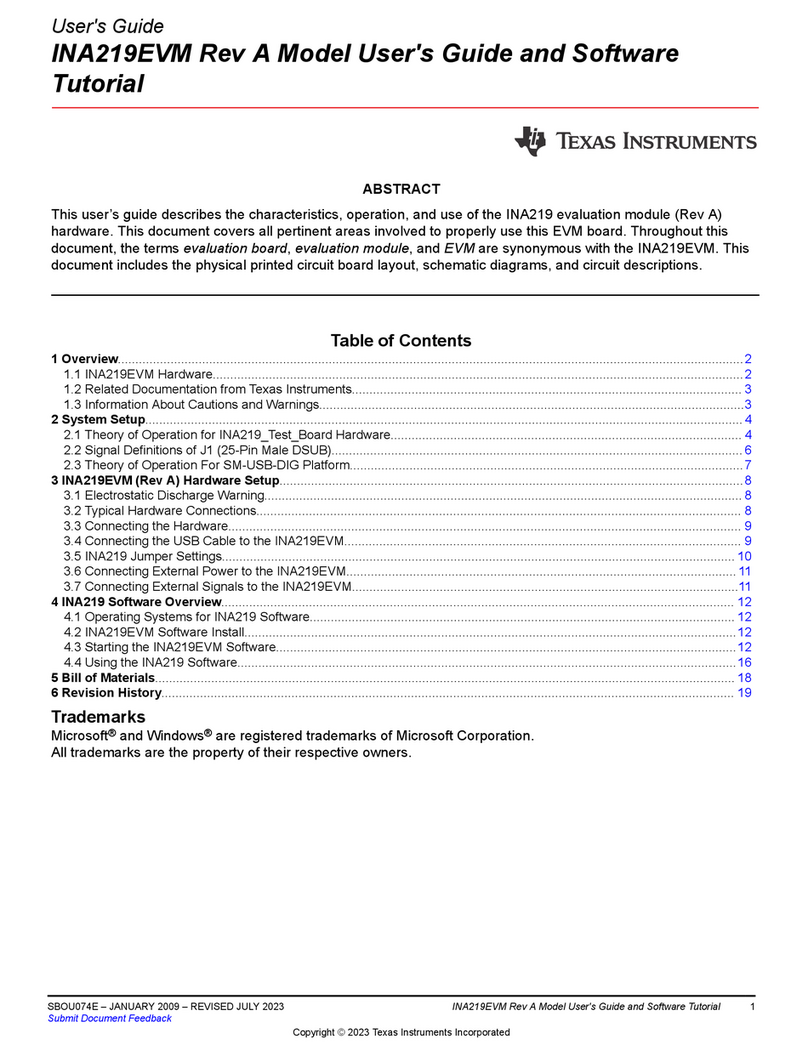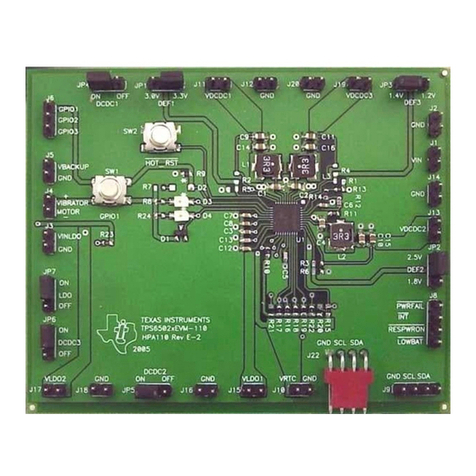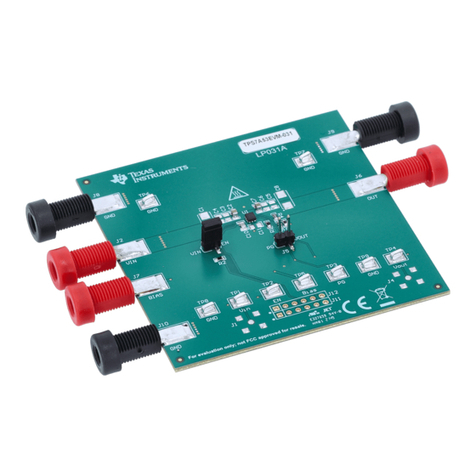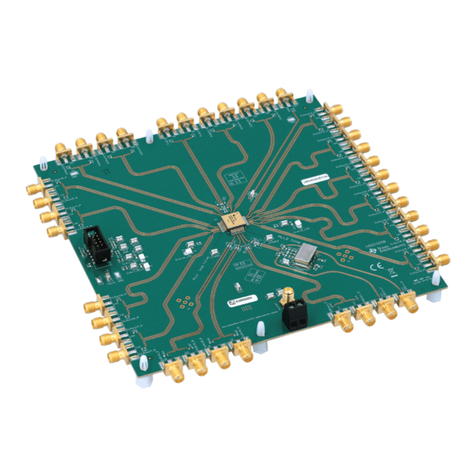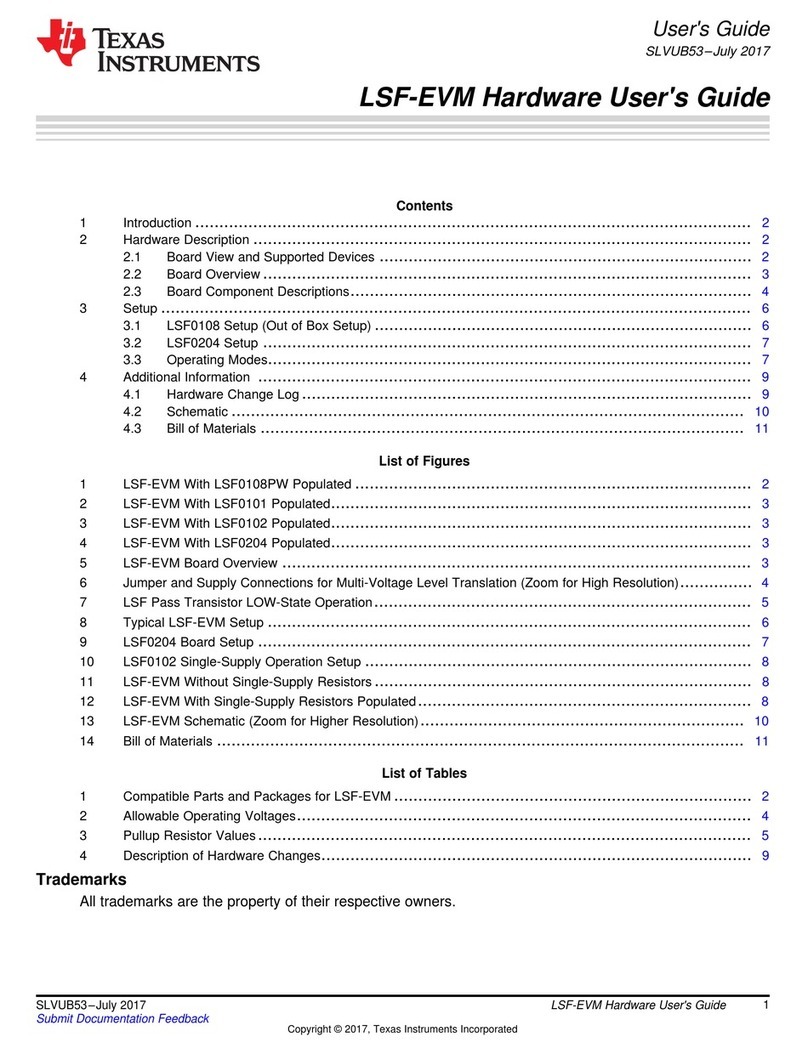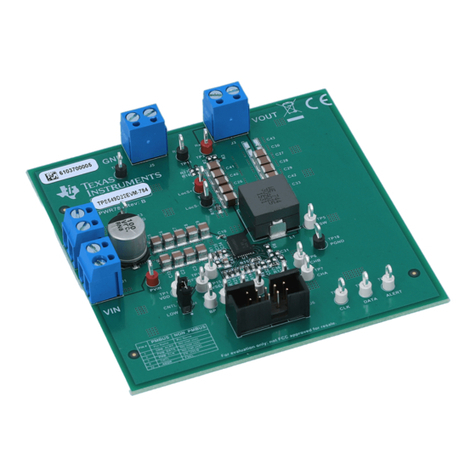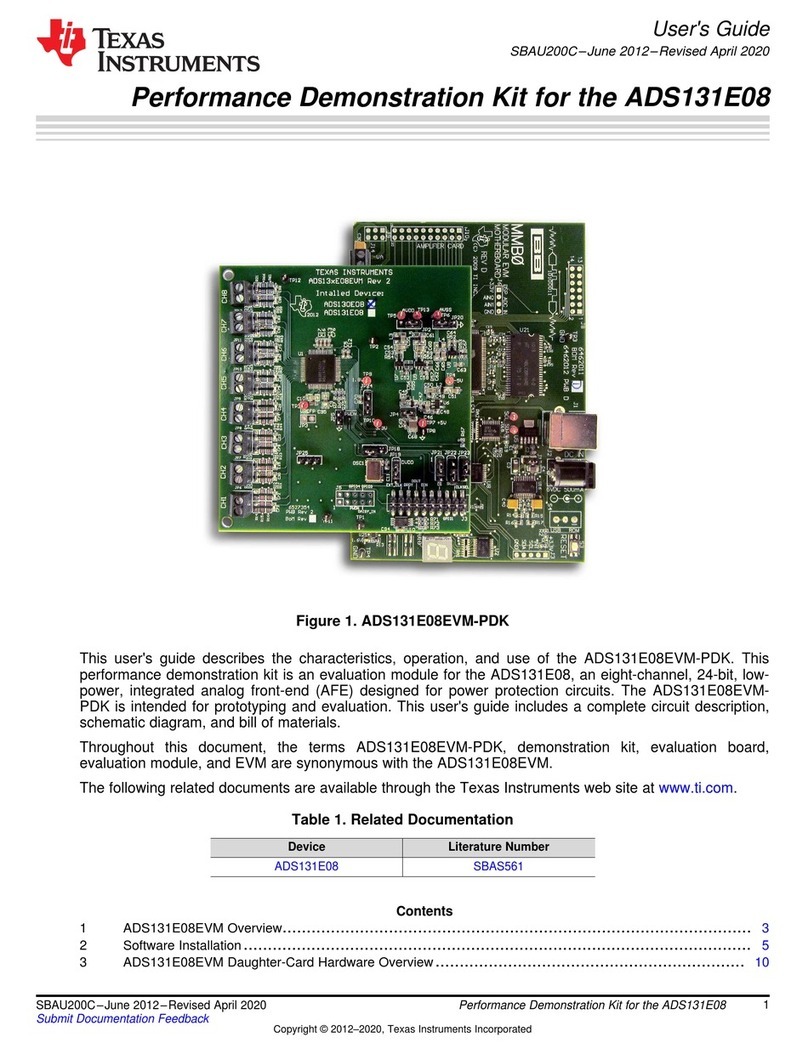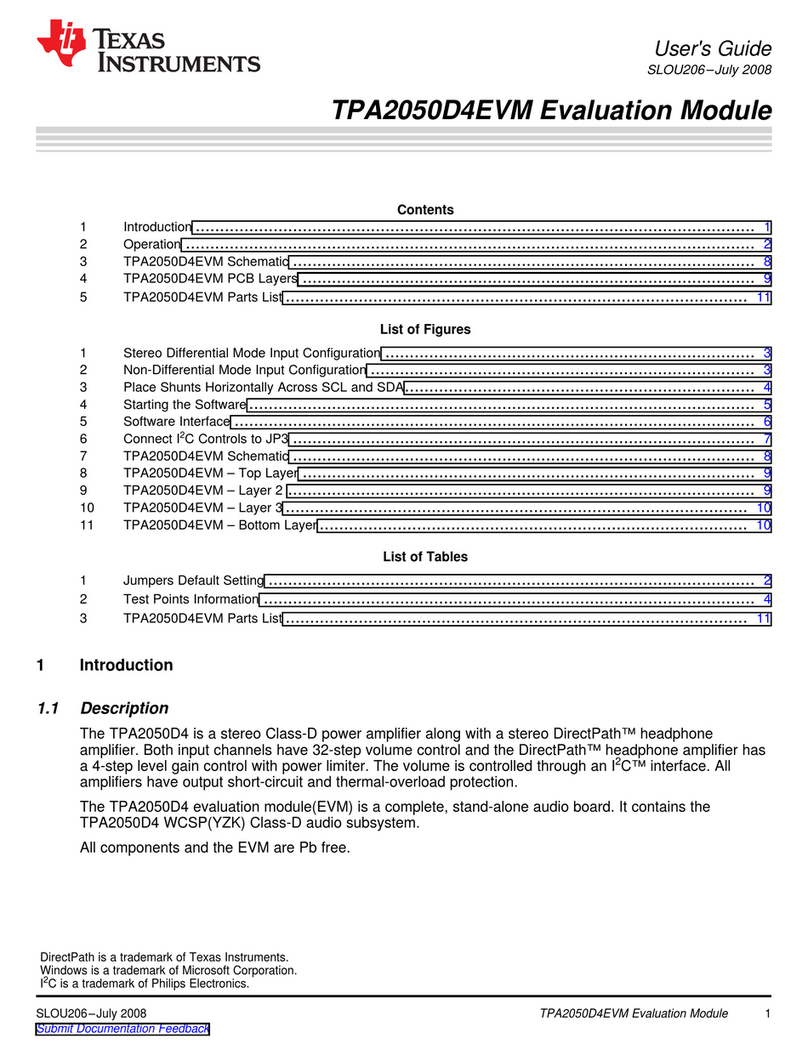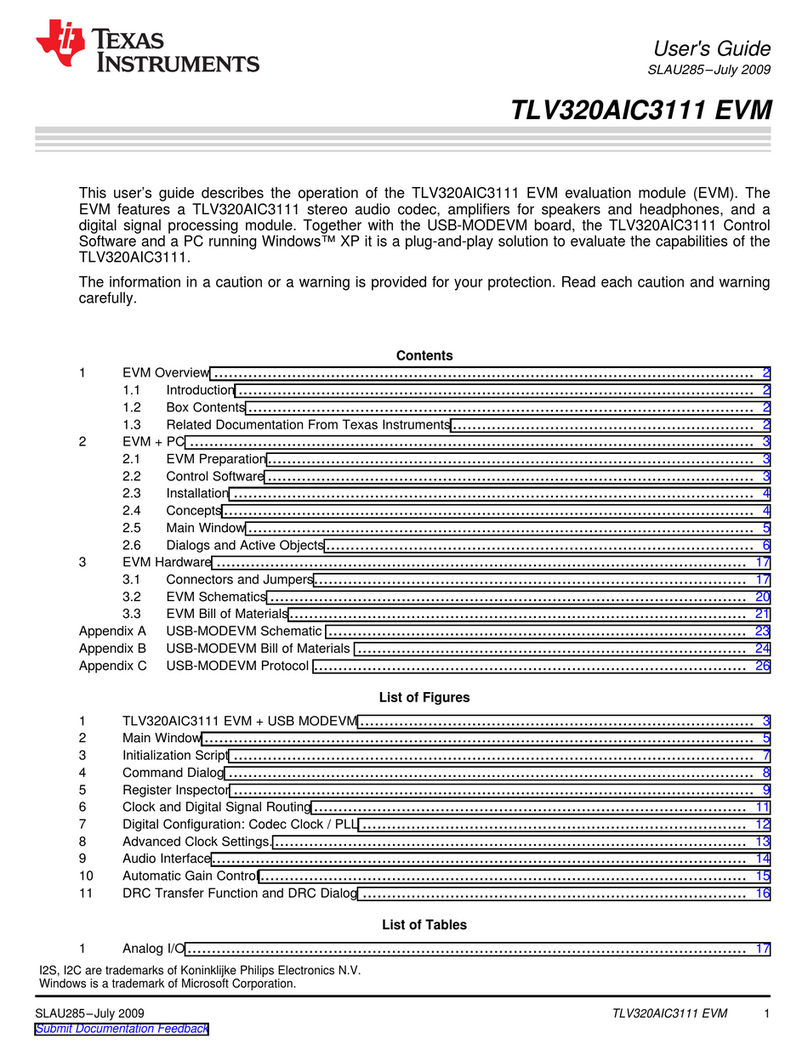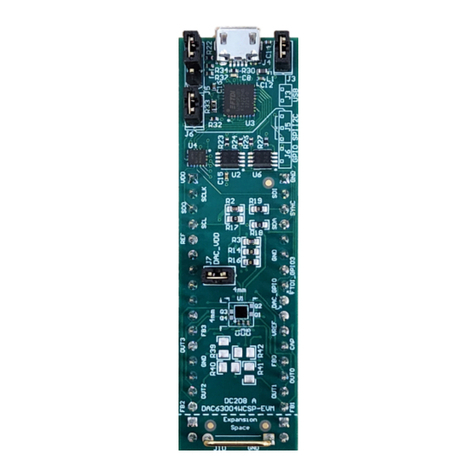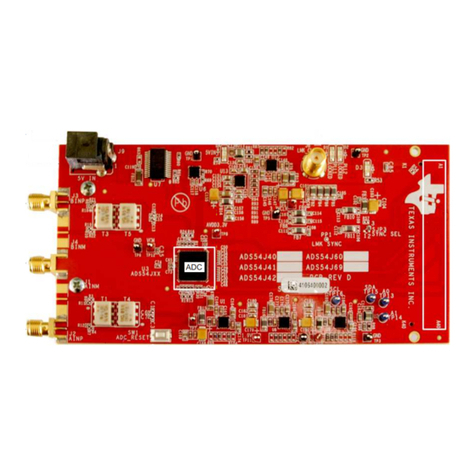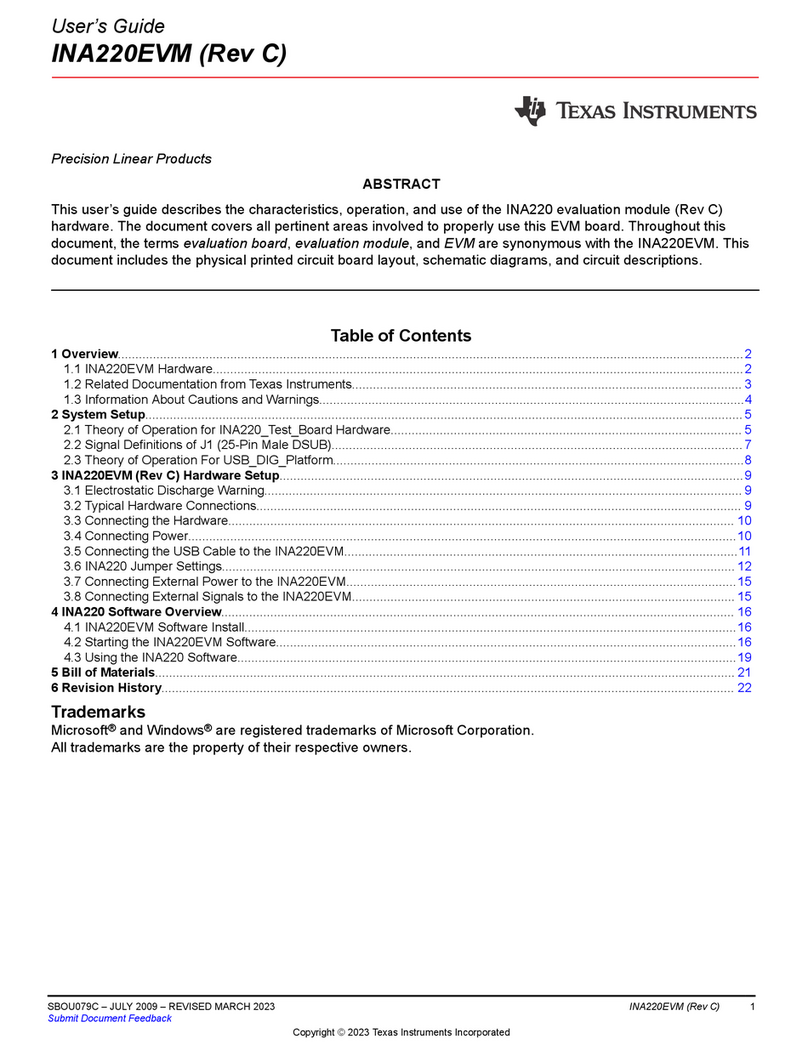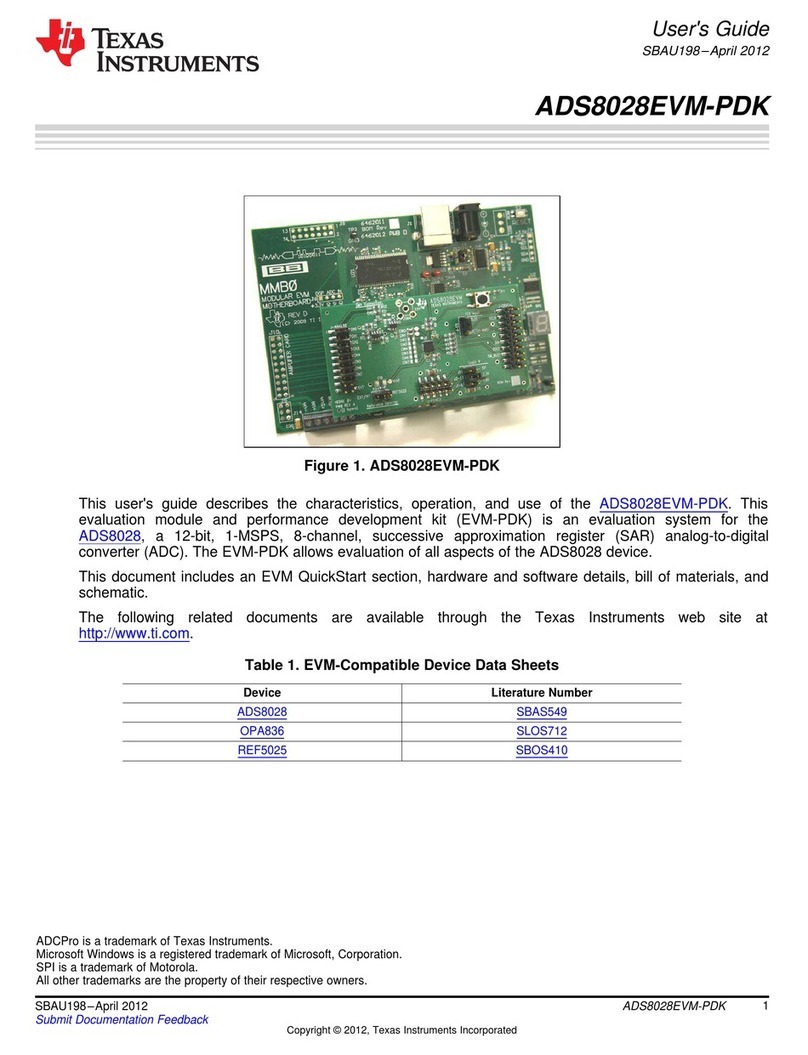
User's Guide
SLOU294B–July 2010–Revised October 2012
TLV320AIC3256EVM-U Evaluation Module
This user’s guide describes the operation, use, features, and characteristics of the TLV320AIC3256EVM-
U. This small form factor evaluation module (EVM) is a programmable USB audio device that features the
TLV320AIC3256 Audio Codec with miniDSP.
Contents
1 EVM Overview ............................................................................................................... 2
1.1 Features ............................................................................................................. 2
1.2 Introduction ......................................................................................................... 2
2 EVM Description and Getting Started .................................................................................... 2
2.1 TLV320AIC3256EVM-U Hardware Description ................................................................ 2
2.2 Getting Started ..................................................................................................... 3
3 AIC3256EVM-U Control Software ........................................................................................ 4
3.1 AIC3256EVM-U CS Setup ........................................................................................ 4
3.2 AIC3256EVM-U CS Usage ....................................................................................... 4
4 TLV320AIC3256EVM-U Schematic ..................................................................................... 12
5 TLV320AIC3256EVM-U Bill of Materials ............................................................................... 14
6 Default Jumper Positions ................................................................................................. 18
7 Writing Scripts .............................................................................................................. 19
8 Related Documentation ................................................................................................... 20
List of Figures
1 Audio Properties ............................................................................................................ 3
2 Main Panel Window ........................................................................................................ 5
3 Compatibility Tab............................................................................................................ 6
4 Playback Configurations and Controls ................................................................................... 7
5 Associated Script and Description........................................................................................ 7
6 Tip Strip Example........................................................................................................... 8
7 Status Flags Panel.......................................................................................................... 9
8 Register Tables Panel .................................................................................................... 10
9 Command Line Interface Panel.......................................................................................... 11
10 Schematic, Sheet 1 of 3 .................................................................................................. 12
11 Schematic, Sheet 2 of 3 .................................................................................................. 13
12 Schematic, Sheet 3 of 3 .................................................................................................. 14
List of Tables
1 Audio Jacks Available to Connect Analog Inputs and Outputs ....................................................... 2
2 Bill of Materials for TLV320AIC3256_RSB_USB_EVM_REVA...................................................... 15
3 TLV320AIC3256EVM-U Rev. A Default Jumper Positions .......................................................... 18
Windows is a trademark of Microsoft Corporation.
1
SLOU294B–July 2010–Revised October 2012 TLV320AIC3256EVM-U Evaluation Module
Submit Documentation Feedback Copyright © 2010–2012, Texas Instruments Incorporated
